UN INT Intro Text w/ Responsive Image - *Important Note* You must UNLINK this shared library component before making page-specific customizations.
Update: August 20, 2019
It's hard to imagine Tania Roth beating her own record of abuse, given her long history of conducting cruel experiments on vulnerable baby rats. But her latest taxpayer-funded "study" proves that there are no limits to the torment she can dream up for her victims.
In this experiment, Roth tore a group of newborns away from their mother and placed them with a stressed foster mother who dropped, dragged, stepped on, and ignored the pups during daily "caregiving manipulation" sessions that the babies had to endure during their first seven days of life.
That was just the beginning.
When they were old enough, Roth had the females mate. Just one day after the animals gave birth, she cut into the heads of these new mothers, removed part of their skull, and inserted a tube into their brain. (Pain relief consisted of a single injection of a pain killer, probably woefully inadequate for such an invasive procedure.) Then, after "allowing" them a mere day for "recovery," she pumped a drug into their brains daily for a week.
Finally, Roth observed the mothers' behavior with their pups for just a half hour and then killed and dissected the mothers.
If you think this is a ridiculous way to discover how to mitigate the negative effects of early-life child abuse on human parenting, you'd be right. For one thing, Roth admits that the drug she used can't cross the blood-brain barrier and had to be administered directly into the brain for her experiments—making the data from her tests entirely meaningless and impractical for humans.
PETA has sent a letter to University of Delaware President Dennis Assanis pointing out that Roth exhibits an alarming lack of empathy in her sickening experiments in which vulnerable animals are subjected to physical pain and psychological distress before being killed—and asking that she undergo a psychiatric evaluation to determine whether she's at risk for other violent behavior.
Take action below to help put an end to this cruelty and waste of our tax dollars.
The University of Delaware's Tania Roth claims that she studies child abuse. But her experiments are all about making vulnerable and sensitive rats suffer. She's forced alcohol down the throats of newborn ones. She's stuffed pregnant mothers into tiny restraint tubes and blasted them with strobe lights. She's purposely terrified rats by repeatedly shocking their feet, and she's taken newborns away from their mothers and given them to other rats who are unable to care for them.
Roth has been tormenting rats in a laboratory – to tune of 1.8 million tax dollars – supposedly to study human child abuse. What is there to show for it? Published papers with glaring omissions about the treatment of Roth's victims, no apparent benefits for human children who are abused, and a mountain of nonhuman children's bodies.

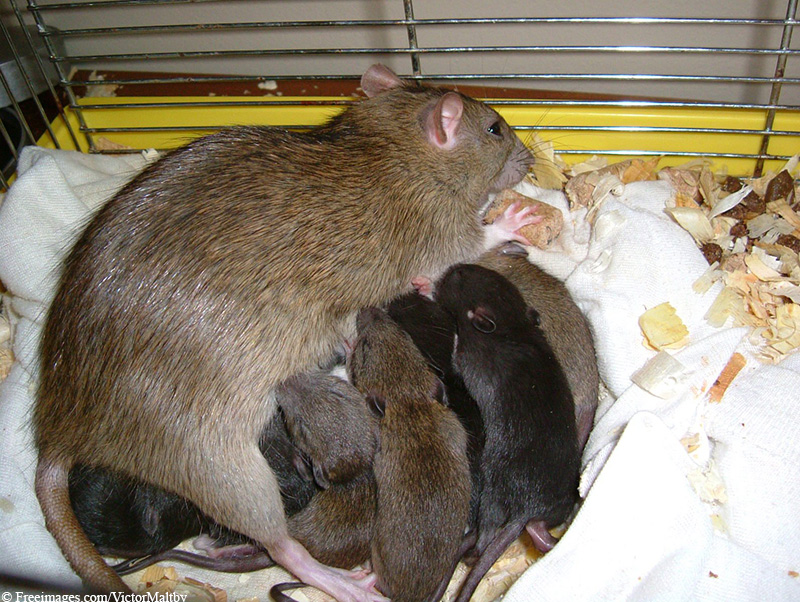
Sensitive adult rats and pups imprisoned in Roth's lab were destined to be tormented in her experiments.
Attacking the Most Vulnerable
Since 2000, Roth has been subjecting rats to mistreatment in early life in order to study their genetic and behavioral changes. In other words, she makes baby animals depressed, anxious, and fearful. Among her cruel and sordid methods to distress newborns are these:
- Injecting infant rats with opioids
- Frightening baby rats by exposing them to the odor of fox urine so that they believe they're in danger
- Artificially increasing the level of the stress hormone corticosterone in rats to make them even more afraid when exposed to the odor of fox urine
- Electrically shocking infant rats
In a recent study, Roth terrified pregnant rats to see if it affected their babies. Three times a day, for three weeks, these animals were squeezed into PVC tubes only 2.5 inches wide and then exposed to high-frequency strobe lights and bombarded with white noise.
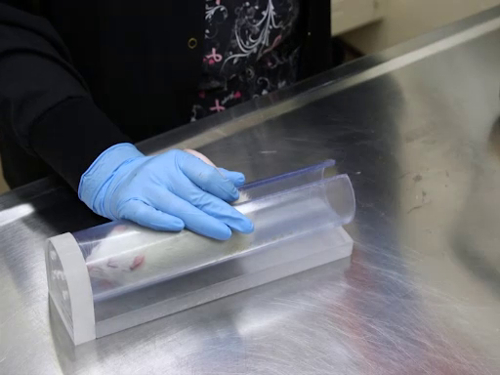
The image above, taken from an article on rodent handling and restraint techniques written by University of Notre Dame staff, depicts a restraint tube similar to the ones used by Roth in her experiment.
These animals were tormented both day and night. Roth then removed the pups from their mothers at birth and put them with other rats.
In another experiment, Roth placed pups with adult rats whose own babies had been taken away from them and purposely deprived the foster moms of sufficient nesting materials. The mothers were so stressed that they dropped, dragged, ignored, and stepped on their foster pups.
In yet another experiment, she stuffed rats into plastic, wedge-shaped cones so small that they were unable to move. She then placed them inside a Plexiglas enclosure, smeared cat food on top of it, and placed that enclosure inside a tiny metal cage with an adult cat for one hour. This was so that the rats would experience "direct cat gustatory activity."
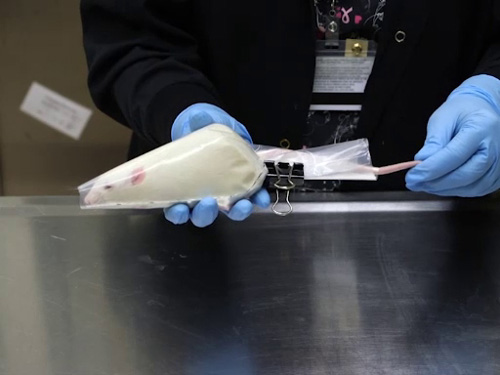
This image, taken from an article on rodent handling and restraint techniques written by University of Notre Dame staff, shows a restraint cone similar to the ones used by Roth in her experiment.
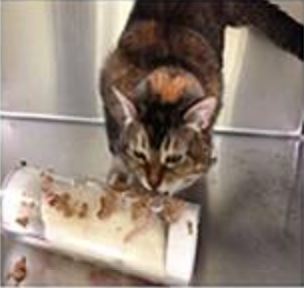
This image depicts an experiment similar to one that Roth conducted, in which a cat was enticed to lick food off an enclosure containing terrified rats.
Roth has also subjected rats to a "forced swim" test, in which the animals are placed in beakers of water and experimenters measure how long they struggle to stay afloat.
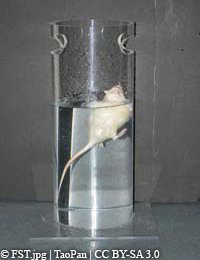
© FST.jpg | TaoPan | CC BY-SA 3.0
These experiments are riddled with mistakes.
A Trail of Little Bodies in Roth's Wake
Roth also routinely kills newborn pups whom she deems "excess," treating these babies like disposable lab equipment—to her, their lives seem to have no value. She describes killing some by injecting formalin (liquid formaldehyde) directly into their hearts—a killing method that is not approved by the American Veterinary Medical Association because it's considered inhumane.
Rats are excluded from the Animal Welfare Act—the only federal law with legally enforceable animal-welfare standards—so they aren't even afforded the meager protections it offers. What's more, Delaware exempts laboratory experiments from cruelty-to-animals prosecution. So Roth gets away with tormenting these social, intelligent beings by doing things that would warrant criminal charges if they were committed outside a laboratory.
We're demanding that the University of Delaware put an end to these tests, and we're calling on the National Institute of Child Health and Human Development to stop funding Roth's experiments.
Please speak out!
You're welcome to use our template letter, but remember that putting your subject line and message into your own words will help draw attention to your e-mail.